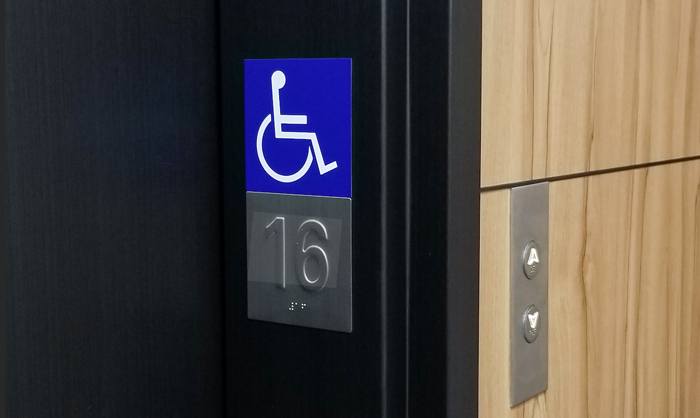Accessibility is everything these days. If you own a business, you can’t neglect this component of your property. Your building and surrounding property must be easily accessible by those with disabilities, able to accommodate anything from walkers to wheelchairs to braille lettering.

It’s not just the right thing to do for your patrons’ convenience — it’s actually the law. The Americans with Disabilities Act (ADA) protects the rights of people with disabilities. This law was signed in 1990 by President Bush to safeguard the civil rights of the disabled, similar to the intent behind the Civil Rights Act of 1964, which prohibits discrimination due to skin color, race, religion, national origin or sexual orientation.
The ADA’s reach even extends to elevators. You will need to comply with this law if you own or operate a building taller than three stories or less than 3,000 sq ft. Mowrey is a big follower of the ADA, which means everything you buy from us is ADA compliant and will be installed to be ADA compliant as well. This is evident in the exact dimensions we provide for all cabs, handrails, and car buttons.
ADA and Elevators: What to Know
From braille plates and chimes to handrails and emergency buttons, pretty much every component of elevators in this country must be ADA compliant.
Here are a few examples of what those entail:
- Braille plates: located at the jambs of entrances, adjacent to buttons.
- Hall and car buttons: 42 inches.
- Call buttons: diameter of at least 0.75 inches.
- Cabs: fit a wheelchair while also accommodating a 360-degree turn.
- Chimes: announce the cab’s arrival at each floor or any floor it passes (even when it doesn’t have to stop).
- Handrails: located at 30 inches.
- Doors: capacity to re-open sans physical contact.
- Emergency buttons: at least 35 inches from floor.
This is far from an exhaustive list. Check out the ADA site for more in-depth information on compliance features in elevators. You will be amazed at how specific the regulations are in regard to anything from floor plans and hall lantern fixtures to signal timing and door delays.
Guidelines For Accessibility
Your goal as a building owner or property manager is to ensure your building can be accessed by anyone of any ability. Keep these guidelines in mind:
- Placement and Operation: Your elevator won’t be compliant with the ADA if it’s located in an inaccessible area of your facility. Visitors, tenants and employees all have the right to safe and convenient access to elevators in public spaces.
- Self-Leveling Features: The cab floor must automatically become flush with the floor wherever it stops, to prevent a tripping hazard and to make it easier for wheelchair access.
- Car Size: The size of the cab is regulated so that it can comfortably accommodate wheelchair users, not just for transport but for turning, entering and exiting.
- Floors: Slip-resistant flooring must be present. If you have carpeting, make sure it’s securely attached and absent of wrinkles, folds, and grooves.
Contact Mowrey Elevator
We would be happy to discuss how Mowrey adheres to ADA guidelines, so just call us today. In the meantime, please feel free to browse our online catalog and layouts for inspiration.
